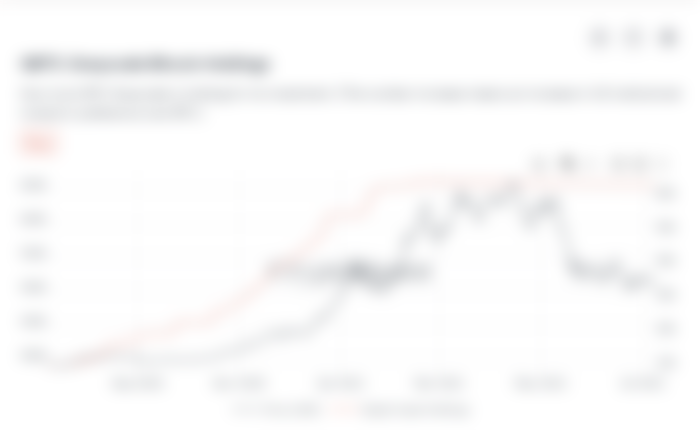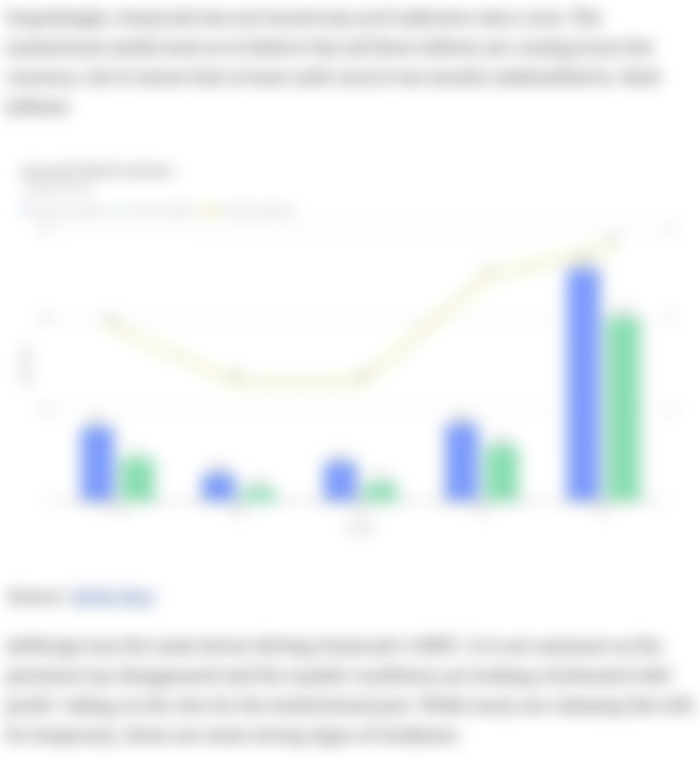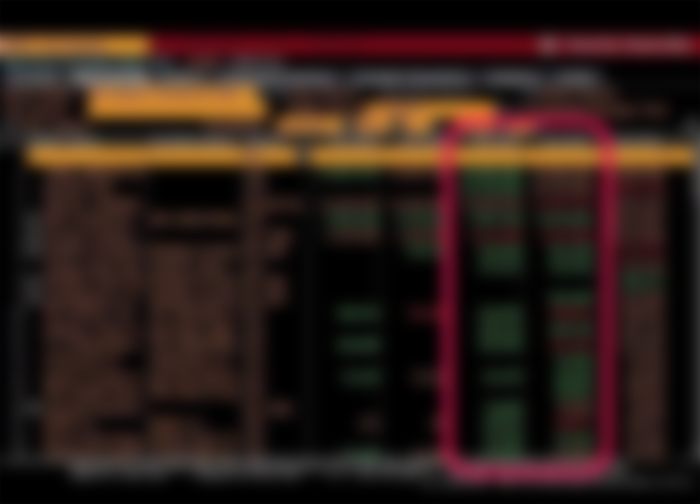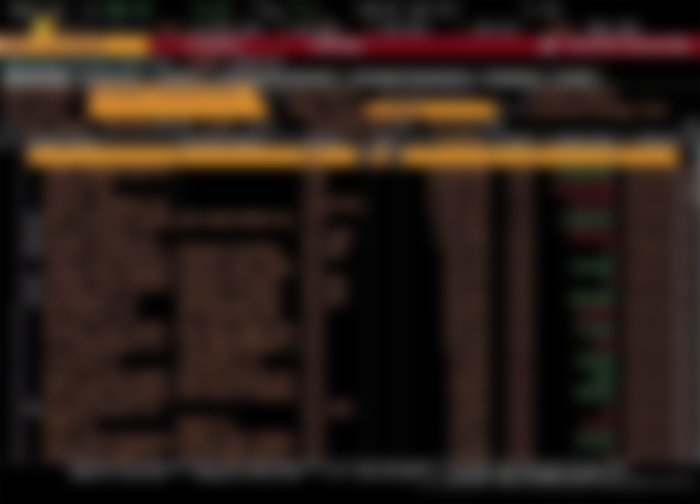
There is a lot of conversation lately fueled by reports coming from JPMorgan concerning a possible collapse of BTC to $25,000.
Some analysts predict that the final unlocking of a massive number of GBTC shares will push prices down. It is expected shares of GBTC equal to at least 40k BTC will be unlocked in July (Source).
JPMorgan has some valid grounds to believe that the price of BTC and to an extent the whole crypto market has still not escaped this short-term bearish trend.
Selling of GBTC shares exiting the six-month lockup period during June and July has emerged as an additional headwind for bitcoin - JPMorgan
I will try to explain further what these analysts mean. However, I also found that any such event to concern a limited period, and will probably not affect the long-term conditions of the crypto market.
I have previously explained details on the model of Grayscale and the discount of GBTC in this article: "GBTC - Institutions dumping Bitcoin in OTC".

The GBTC Discount
On March, 11th, I've written a post on Den.Social analyzing the price action of GBTC. This was the chart back then:

Source: Yahoo Finance
Short term, I am still bullish on Bitcoin. For the next three months, I see the price being able to reach 60-80k.
This was the outcome from what I saw on the charts. The market was bullish and GBTC was already being replaced by the Canadian ETFs. It wasn't something exceptional as a prediction, since the price was at $55K at the time of writing. BTC went up another $10k and then started a rapid decline.
This discount to NAV that I noticed in just the first few days, kept increasing for weeks. And it never really left. I wrote more articles and expressed fears at the beginning of April while watching the GBTC discount still not able to recover.
It wasn't the reason BTC dropped though. However, it was one of the reasons for increased resistance, making institutions and accredited investors consider the price was too high to buy at $55-65k.
Current GBTC discount to NAV

Source:Yahoo Charts
GBTC is trading at a discount of 10-15% all this time since February.
Since the beginning of 2020, the lockup period of GBTC shares of the Grayscale Bitcoin Trust became SEC-compliant and the lockup period was reduced by half (from 1 year to 6 months). It was one of the main factors that increased institutional interest in GBTC.
Although, more data need to be considered together with the discount.
BTC Holdings - Grayscale stopped issuing GBTC

Source: CryptoQuant
First, I begin with this having in mind that JPMorgan recognizes the fact that BTC on Grayscale's custody is not redeemable. Grayscale doesn't sell this BTC back in the cryptocurrency market. Any kind of institutional behavior is not contagious but remains in the OTCQX exchange which may or may not represent the sentiment of the cryptocurrency markets. More often it doesn't, since we have seen huge premiums for a lengthy period (years).
The "red line" in this chart represents the BTC Grayscale has in its custody. The number didn't increase for months and the explanation is that Grayscale did not sell any new shares all this time.
Some reasons explain Grayscale's decision to stop selling new shares of GBTC.
The discount to NAV was caused mostly by the amount of ETFs that started around the world. The Canadian Bitcoin ETFs lured most of the institutional investors away from Grayscale and the secondary OTC market.
Grayscale pursues to develop the Trust into an ETF, but still meets strong resistance from regulators.
In April while BTC was hovering at around $60k I warned that there was no new institutional money entering Bitcoin through the Grayscale's Trust (GBTC - Institutions dumping Bitcoin in OTC).
However, there was still money entering through the most profitable Canadian ETFs.
In this article, I have also written about the nature of the inflows Grayscale was accepting for GBTC. (Link)
Grayscale In-Kind Inflows
I will repost this part which explains the "in-kind" inflows that seem to be important for those analysts countering the JPMorgan arguments.
These inflows are not described at all by Grayscale and I failed to find more information but it is widely expected. This is what I wrote back in March about the "in-kind" inflows:

The signs of weakness were obvious for GBTC since the discount to NAV is now in its fifth month. The crypto influencers that were claiming that the GBTC discount was going to be temporary were not just wrong but were also misdirecting their followers on purpose.
Unlocking and massive dumping in the secondary market of OTCQX will affect the price of BTC when the liquidations don't follow renewals of purchases of BTC in spot exchanges.
And this has happened already on many occasions since the beginning of 2021. All the massive purchases of BTC after the lockup period of 6-months from the purchase ended have led to price corrections for BTC.
The increased "in-kind" contributions can have a very different effect from what JPMorgan was suggesting and can easily push the price up for both BTC and GBTC.
These are debt obligations that will return in the "spot" market. There are Bitcoin denominated investors that tried to arbitrage with GBTC but the discount messed the plans.

Source: Alex Thorn
There was lots of arbitrage trading by funds trying to exploit the huge GBTC premium and they all were also shorting as a hedge in case BTC crashed during these 6 months.
GBTC Lockup Period Ends - BlockFi in Question

Source: QCPCapital
This is the position of top GBTC investors given by QCP Capital. It explains the new positions of these investment funds in Q1/2021 which was the last quarter.

Source: QCPCapital
And this is a more clear image of the position of the top funds invested in GBTC. In this image, we can notice that BlockFi has sold half of its position already, which was acquired during Q4/2020 (SEC Report).

Source: QCPCapital
BlockFi's model was based on the arbitrage of GBTC, and when selling is expected to rebuy BTC from spot exchange and pay back the interest in the investment accounts.
The GBTC discount will probably create problems for BlockFi investors, since the APR provided will be significantly lowered to contain the loss of funds by the company.

There has also been a lot of discussion about the sustainability of BlockFi's model (Source). The fact that BTC and GBTC prices are lower than the latest acquisitions by BlockFi may turn out to validate such claims.

Conclusion
With this article, I try to explore and analyze the current conditions of GBTC and try to bring some clarity, by providing important facts.
JPMorgan makes this case:
It would still take price declines to the $25,000 level before longer-term momentum would signal - JPMorgan
A counter argument to JPMorgan's claims is that buying pressure will increase in the "spot" markets and BTC price will instead grow.
JPMorgan didn't discuss any of the previous expirations of huge GBTC massive lockup periods that applied from December 2020 till June 2021 and send the GBTC premium to negative (discount).
Until May, this bank was also promoting Bitcoin and its planning of opening cryptocurrencies trading desks.
In case these analysts are correct, the price could go lower but just for a short period. It will probably set a better stage and improve market sentiment right after the unlocking period ends.

GBTC Unlock, Source: Bybt
Following this final unlocking, all GBTC shares will be unlocked and tradeable in the OTCQX exchange. Concerning BTC and the investors waiting, this could be something like a final dip during this mini bear market, and probably will be for the near term.
This post is not investment advice but made to analyze this certain event. There is a logic behind the JPMorgan argument but there are also reasons that support the case of BTC rising right after the unlock period.

BACKPAGE
Lead Image Source: FXprofitsignals
Support Bitworkerss!: Flipstarter
More Info: Bitworkerss! Flipstarter Is On

Active on:
● ReadCash ● NoiseCash ● Medium ● Hive ● Steemit ●Vocal ● Minds
Social Media:
Shout-out to my Top Sponsors:














